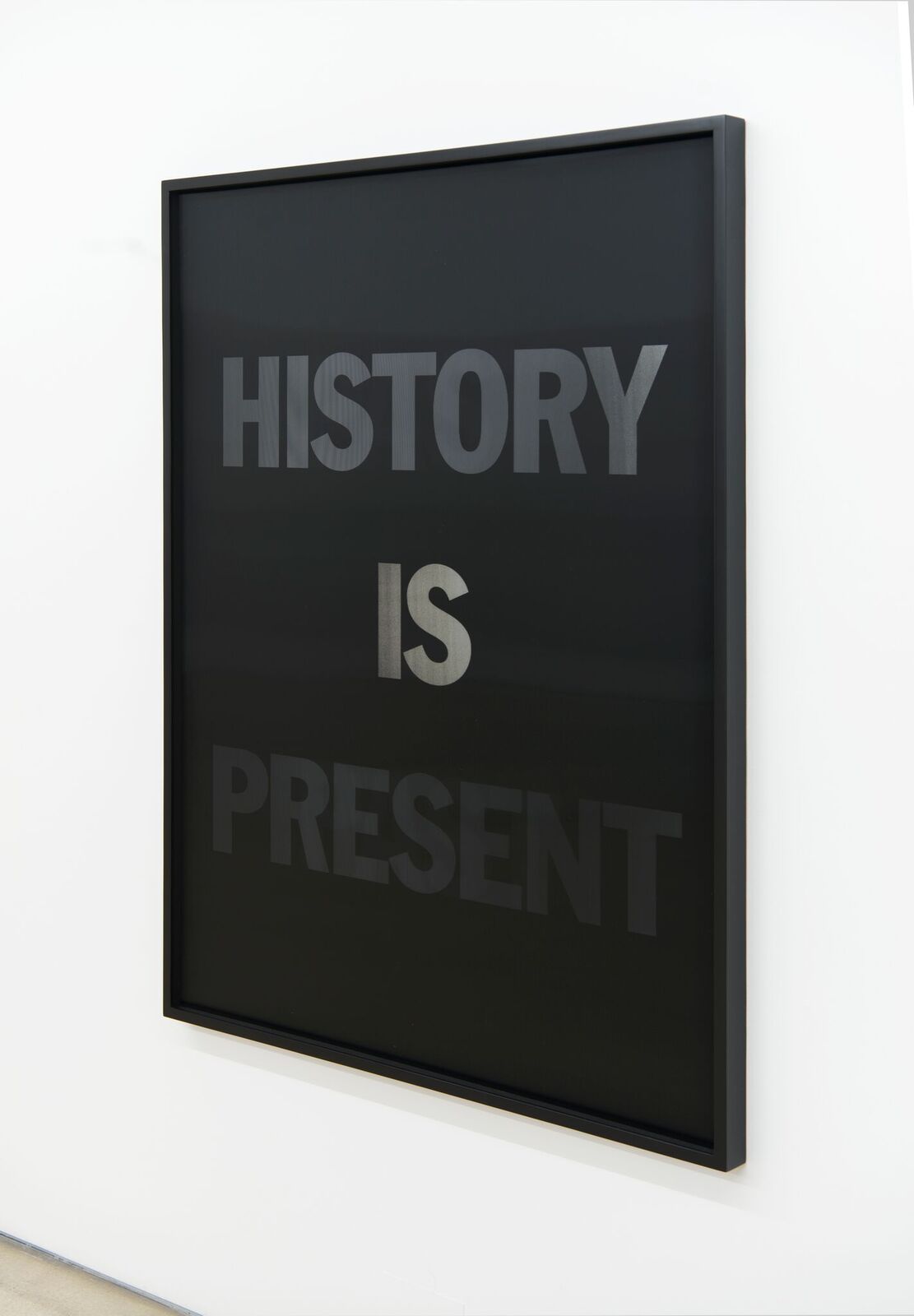
This is part of our special feature on Radicalism and Violence.
Artists Hank Willis Thomas and Yosman Botero have experienced racial inequality and terror, as well as issues of gun violence first hand. In 2000, Thomas’ best friend and cousin was murdered for a piece of jewelry outside a Philadelphia night club. The fact “that someone could be killed over a tiny commodity” did not let Thomas rest, and he felt determined to challenge our commodity culture and its resulting greed juxtaposed against the promise of a Mastercard slogan. “Raise Up,” on the other hand, calls awareness to racism and police brutality, pulling viewers into countless unarmed victim cases and making them witnesses to inequality.
Yosman Botero depicts the violence in his birthplace, Cúcuta, a Colombian city situated on the border to Venezuela, that has been a hub for a multitude of criminal activities: a transshipment point for drugs, contraband smuggling, arms trafficking and illegal mining. His shimmering gold guns point to security forces, increasingly corrupt entities wherein significant amounts of weapons and munitions vanish through the desire for power and money by criminal groups ready to pull the trigger.
–Nicole Shea for EuropeNow
Hank Willis Thomas
 History is Past, Past is Present, 2017 © Hank Willis Thomas. Courtesy of the artist and Jack Shainman Gallery, New York
History is Past, Past is Present, 2017 © Hank Willis Thomas. Courtesy of the artist and Jack Shainman Gallery, New York Priceless #1, 2004 © Hank Willis Thomas. Courtesy of the artist and Jack Shainman Gallery, New York
Priceless #1, 2004 © Hank Willis Thomas. Courtesy of the artist and Jack Shainman Gallery, New York Raise Up, 2014 © Hank Willis Thomas. Courtesy of the artist and Jack Shainman Gallery, New York
Raise Up, 2014 © Hank Willis Thomas. Courtesy of the artist and Jack Shainman Gallery, New York
The sculptural works are part of Thomas’ Punctum series which draws inspiration from French philosopher Roland Barthes’ idea of the punctum: that “element which rises from the [photographic] scene, shoots out of it like an arrow and pierces.” Thomas uses this concept to select and re-frame segments of historic photographs which he then renders in 3-dimensions. Through cropping and isolation, Thomas encourages the viewer to contemplate framing itself.
In Raise Up, Thomas creates a monument to an early 1960s photograph by Ernest Cole (1940–1990), one of the few “Black” photographers to document life in apartheid-era South Africa. In the original photograph, gold mine recruits are stripped down for a group medical examination. Thomas distills the impact of Cole’s image by reproducing the workers’ raised arms in bronze in three dimensions. The gesture recalls countless other images made in the decades since – reminders of how violence against racialized groups persists.
Hank Willis Thomas is a conceptual artist working primarily with themes related to perspective identity, commodity, media, and popular culture. His work has been exhibited throughout the United States and abroad including the International Center of Photography, New York; Guggenheim Museum Bilbao, Spain; Musée du quai Branly, Paris; Hong Kong Arts Centre, Hong Kong, and the Witte de With Center for Contemporary Art, Netherlands. Thomas’ work is included in numerous public collections including the Museum of Modern Art, New York; Solomon R. Guggenheim Museum, New York; Whitney Museum of American Art, New York; Brooklyn Museum, New York; High Museum of Art, Atlanta, and the National Gallery of Art, Washington D.C. His collaborative projects include Question Bridge: Black Males , In Search Of The Truth (The Truth Booth) , and For Freedoms , which was awarded the 2017 ICP Infinity Award for New Media and Online Platform. In 2012, Question Bridge: Black Males debuted at the Sundance Film Festival and was selected for the New Media Grant from the Tribeca Film Institute. Thomas is also the recipient of the Guggenheim Fellowship (2018), AIMIA | AGO Photography Prize (2017), Soros Equality Fellowship (2017), and is a member of the New York City Public Design Commission. Thomas holds a B.F.A. from New York University (1998) and an M.A./M.F.A. from the California College of the Arts (2004). He received honorary doctorates from the Maryland Institute of Art and the Institute for Doctoral Studies in the Visual Arts in 2017. Thomas is represented by Jack Shainman Gallery, New York; Ben Brown Fine Arts, London; Goodman Gallery, South Africa; and Marauni Mercier, Belgium.
Yosman Botero





This series constructs an intertwined form through the repeated superposition of layers of a rifle, concealing the illusion of a fictive object. These collages, held on a neutral black background, take over the focus of documentary photography of museum or jewel catalogs and transfer the concept of cultural value to the new presentation, which underlines their craftsmanship character.
The reinterpretation of historical iconic objects, such as a firearm, allows Botero to link the pre-colonial past with the armed conflict of decades and the current situation in Colombia.
Yosman Botero Gomez was born in the city of Cúcuta – Colombia in 1983. He graduated in fine arts in 2010 at the University of Antioquia in Medellin-Colombia. His work, which blends easily between different creative elements addressing drawing, painting, video and installation, has received numerous honors and awards. His work focuses mainly in the pictorial representation creating a tri-dimensional effect using many layers of painted glass, in order to confront a work of art with the observer but in an everyday context. Botero lives and works in Spain.
Nicole Shea ran CenterArts Gallery in Newburgh from 2009-2012 and later incorporated her arts experience into the leadership training at West Point. In 2015, she founded a large-scale sculpture walk outside the gates of West Point, which she has been curating together with the founding members of Collaborative Concepts in a community effort to revitalize the area via the arts. She is also Executive Editor of EuropeNow and Director of the Council for European Studies.
Published on October 2, 2018.




